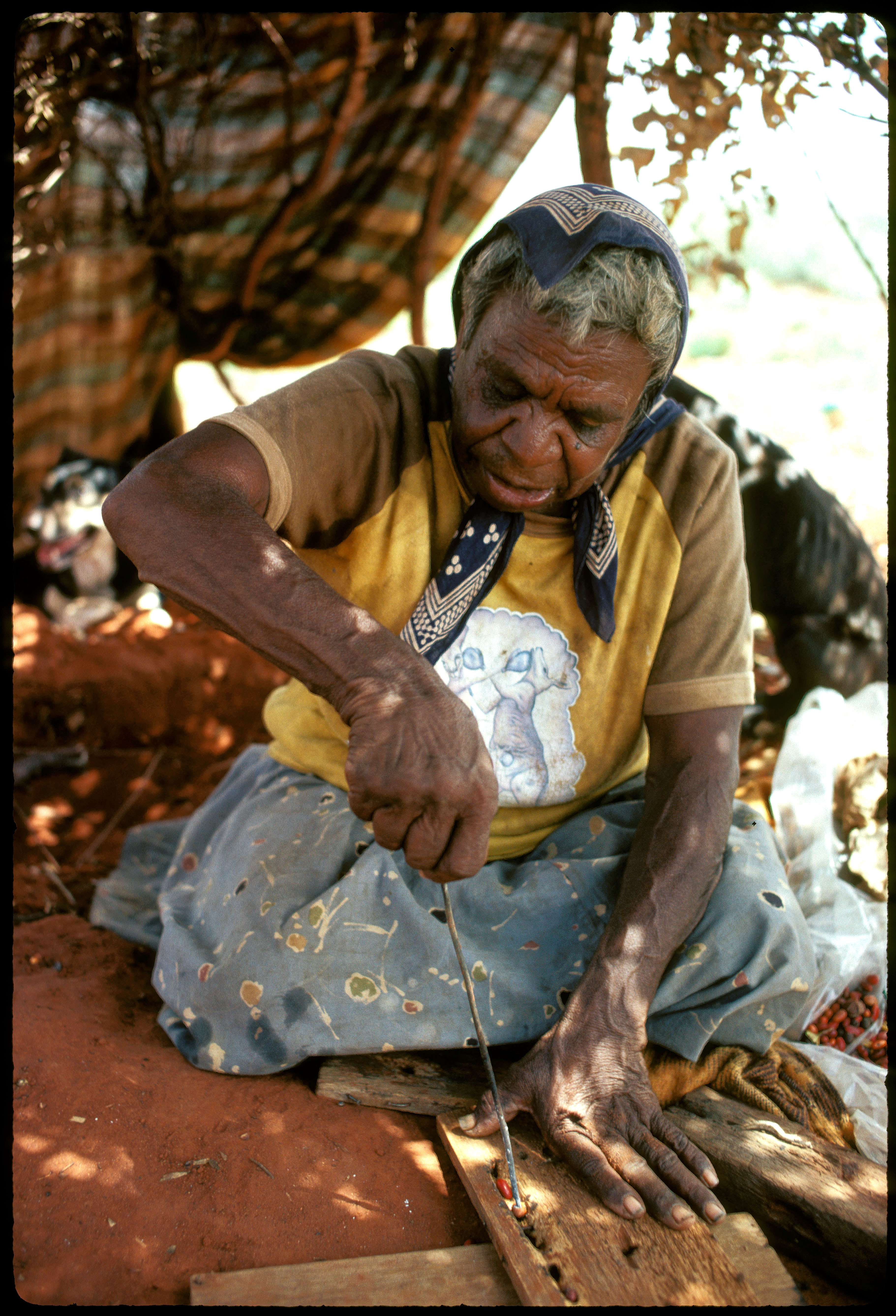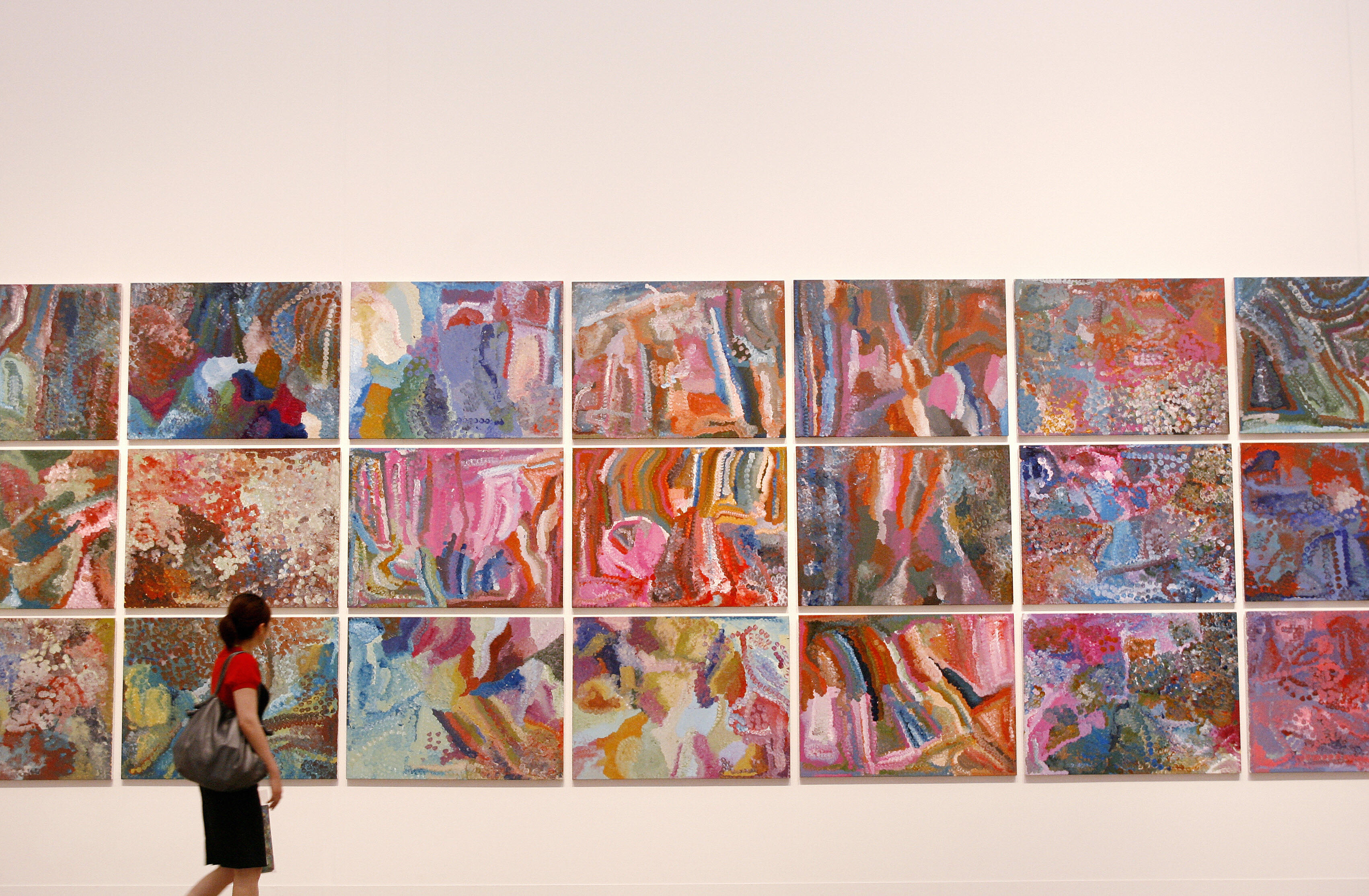Kngwarreye, Emily (1910-1996), was an Australian Aboriginal artist. Although she did not begin painting on canvas until she was in her 70’s, she quickly became one of the most famous Aboriginal artists in Australia. Her artistic style has often been compared to such Western abstract expressionists as Jackson Pollock. However, her work has also been noted for its unique cultural identity. 

Emily Kame Kngwarreye was born in 1910 in Alhalkere, a desert region also known as Utopia, in the Northern Territory. She was a member of the Anmatyerre people, an Australian Aboriginal group that traditionally lived on the Utopian lands. After the area was settled by white Australians in the 1920’s, Kngwarreye began working on cattle farms in the region.
In 1977, Kngwarreye was introduced to fabric painting using the batik style. Batik is a way of dyeing fabric that uses hot wax to control the placement of the dye. She worked with other Utopian artists to produce hundreds of silk and cotton batik pieces. In 1978, Kngwarreye helped found the Utopia Women’s Batik Group, which worked to promote women in the batik artistic trade. The group came to the attention of the Australian artist Mona Byrne. She hosted the first public exhibition of Kngwarreye’s work in 1980. Byrne succeeded in bringing national interest to the batik artists, and the group’s pieces were exhibited around the country over the next three years. Kngwarreye’s work caught the attention of an American art gallery in 1989, and a collection of her pieces went on tour in North America.
In the late 1980’s, Kngwarreye and the Utopian artists began experimenting with other painting styles. Kngwarreye completed her first acrylic painting on canvas in 1988. She carried over many of her techniques from batik, including layering colors to capture the natural Australian landscape. She also used traditional designs found in Aboriginal rituals in many of her paintings, including Awelye (1995) and her 1996 body painting series. In 1995, she started a famous series of paintings of the yam, showing the Aboriginal food staple in a variety of abstract depictions.
Following her yam paintings, Kngwarreye’s international fame grew rapidly. Although she rarely left Utopia, dealers and collectors came from around the world to see her work. One of her paintings, Big Yam Dreaming (1995), received a permanent display at the National Gallery of Victoria. It is estimated that Kngwarreye completed around 3,000 paintings over the span of 8 years. She died on Sept. 2, 1996.
In 2017, her painting Earth Creation 1 (1994) sold for over $2 million. It was the highest price ever paid for an artwork by an Australian Aboriginal woman.
